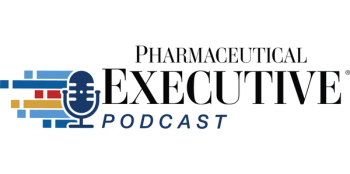Assessing the Access Landscape
Key Takeaways
- Specialty drugs' complexity challenges traditional patient hub services, necessitating streamlined capabilities and automation to manage coordination and prior authorization requirements.
- Direct-to-consumer pharmacy models offer streamlined access, reduced administrative burden, and better patient outcomes, enhancing transparency and sustainability for brands.
Q&A with Harry Totonis, CEO and chairman of ConnectiveRx, on embracing change and seeking better solutions amid today’s challenging playing field for patient access.
If there’s anyone perhaps uniquely qualified to provide a balanced lens—from finance to tech advance—on the swirling tides in prescription drug access, it may be Harry Totonis, CEO and chairman of ConnectiveRx.
The longtime executive and business mind (he cut his teeth during a 15-year run at Booz Allen Hamilton) stepped back into the head C-suite role at ConnectiveRx in January 2023 after transitioning to board chairman two years earlier. Working with Genstar Capital, where Totonis remains an advisory board member today, he founded ConnectiveRx in 2015. The tech-driven services organization (it has around 1,400 employees today) helps biopharma manufacturers, healthcare providers, and patients navigate the complexities of the prescription process.
Such complexities, of course, have grown considerably in recent years and months—with branded and specialty drugs particularly subject to the fluidity engulfing the market access and policy landscapes at the moment. ConnectiveRx focuses in both of those treatment terrains, across patient support, affordability, awareness, and adherence.
In the below interview with Pharm Exec, Totonis shares his thoughts on the evolving dynamics in healthcare access—and how he keeps his company centered on its vision for the future, including the need to seize on new strategic opportunities that he believes will stem from the current disruption.
Notably, prior to ConnectiveRx, Totonis was president and CEO of Surescripts, where he helped develop it into the US’s largest e-prescribing and clinical information network. He has also held leadership positions at MasterCard and Kinexus.
Pharm Exec: Specialty drugs now account for a significant portion of pharma spending and, with advances, are becoming increasingly complex to manage through the supply chain. How has that challenged traditional patient hub services, the various touchpoints, and wider healthcare efforts in affordability and adherence?
Totonis: The access landscape is shifting as specialty drugs dominate pharma spending, and hub services have evolved from support functions to being central to brand success. We're managing exponentially more complex coordination requirements—logistics, specialized handling, limited distribution networks, and specialty pharmacy coordination—which demands streamlined capabilities.
Prior authorization requirements have intensified, with 80% of providers reporting increases, according to a 2024 AMA study, creating more drag on an already slow process. This makes automation of labor-intensive processes essential.
Cost remains the biggest barrier, and the data is clear—IQVIA shows $250 out-of-pocket costs result in 50% abandonment rates. We're seeing more direct-to-patient solutions and enhanced point-of-care awareness to address this.
Managing specialty medications requires real-time visibility across the full patient journey, allowing us to help clients optimize programs for their patient populations through constant data analysis.
Our mission is simple: make it easier and faster for providers to prescribe the best therapy and for patients to access it without red tape. As medication complexity increases, we simplify the process through technology combined with skilled teams that deliver the full value of patient support services. Without them, patients lose access, and the commercial success of the brand is in jeopardy.
Pharm Exec: With the emergence of DTC pharmacy models, particularly out of Big Pharma, how are companies such as yours advising or supporting healthcare providers in navigating this terrain? Are the benefits apparent?
Totonis: The emergence of DTC pharmacy models represents a significant opportunity for pharma companies to develop direct relationships with patients while cutting out the middleman. Instead of the money pharma spends with intermediaries, it can now be passed along directly to patients in the form of better pricing, more savings, and enhanced support services.
These models offer clear benefits—streamlined access, reduced administrative burden, and often better patient outcomes through direct engagement. The most successful implementations we've seen maintain the personal touch and comprehensive support that patients require while delivering the cost savings and efficiency gains that come from direct relationships. When done right, cutting out the middleman creates a win-win—better access and more transparency for patients and more sustainable economics for brands.
Pharm Exec: Where do you see this trend headed? Do you believe we’re essentially entering a new age of DTC Rx care?
Totonis: For years, the industry has talked about patient centricity –“putting the patient at the center of everything we do.” DTC models are where that vision actually becomes reality, and I think that's a fundamentally positive shift. We're seeing easier access for patients, the ability to pass along more cost savings directly to them, and it's helping pharma build genuine trust through direct relationships rather than operating through multiple layers of intermediaries.
Pharm Exec: What’s your take on the potential impact from other US policy shifts in the works, such as most-favored nation (MFN) drug pricing and continued Inflation Reduction Act (IRA) implementation? Do you see unintended consequences springing from those, and do you envision heavy adjustments to the access playbook?
Totonis: We are always assessing the policy and regulatory landscape, especially when new administrations take office, and we bring in third-party experts to help us really understand the impact to our business and across the healthcare ecosystem, because it’s all connected. Overall, the research conducted on the current landscape concluded that the scope of federal drug pricing reform, be that the IRA or MFN, is predominantly limited to Medicare and not commercially insured patients, which is who we predominantly serve on behalf of our pharma clients.
While the executive order around MFN pricing is not limited to Medicare and puts some pressure on pharma, research anticipates that the impact to commercial pricing is relatively low and could potentially be limited to Medicaid and new drug launches, which gives pharma more time to strategically plan their pricing strategies.
That being said, the access playbook should always be evolving, and the earlier access strategies are developed in the commercialization process, especially with some uncertainty around policy impact and pricing, the better.
Pharm Exec: How are advances in AI/predictive analytics fitting into that equation—and shaping your company’s future strategy as well?
Totonis: AI has been and continues to be a focal point of investment for ConnectiveRx. Almost every RFP we receive now includes AI questions, especially as brand budgets come under tighter scrutiny.
But to us, AI should mean more than just cost savings for brands—that's really table stakes at this point. We're focused on when and where AI integration makes sense to ensure it continuously provides and maximizes value. There's a critical distinction between cost-focused automation and outcomes-focused automation. We're thinking beyond how AI leads to better quality and faster output and looking at how AI helps us and our clients achieve better outcomes. Those efficiencies should translate into better brand performance, not just cost savings.
Healthcare will always be a very human experience, so we're integrating AI that strengthens patient engagement and relationships rather than replacing them. Our clients trust us not only with the integrity of their brand but also with the care of their patients. AI can fast-track and clear the path for our human team to dive in and do what they do best—provide great care and resolve issues with empathy.
Pharm Exec: You returned to the CEO role in January 2023 after serving as chairman. What prompted that decision, and how have your strategic priorities shifted since then?
Totonis: The opportunity that excited me in 2015 when I founded ConnectiveRx is still there and growing. There's tremendous potential to disrupt how pharma commercializes specialty medications, and while we've made significant progress at ConnectiveRx, I believe our biggest impact is still ahead of us. I wanted to be back with our team to fully realize that vision.
Our priorities haven't changed—we're focused on delivering an exceptional experience for our clients, healthcare providers, and patients. That happens through three key areas: first, executing everything we do with precision and striving for flawlessness; second, knowing when technology is enough or when technology needs to be paired with the human touch; and, third, serving as a strategic ally for our clients. Our job is to make our partners' jobs easier. When we do those three things well, we're succeeding.
Pharm Exec: Having transitioned between CEO and chairman roles, what leadership lessons stand out?
Totonis: Surround yourself with the right people. For me, it always comes down to the team because at the end of the day, I can't and don't know everything. I have to rely on the experts around me to make the best-informed decisions, so building and maintaining a trusted team is absolutely critical to success.
Pharm Exec: What, personally, keeps you centered through industry change? Or guiding principles along your career path?
Totonis: As a student of history, when I look at the past 100+ years, there's only one constant—and that's change. Change in the moment always looks disruptive, but if you step back and assess where we are, we're all better off from the changes that have taken place. We have better medicines, better treatments, and better outcomes across the board.
Change forces innovation. When the status quo is disrupted, it pushes us to find better solutions. Market shifts, regulatory changes, new technologies—they all force us out of our comfort zones and compel us to think differently, solve problems creatively, and ultimately deliver better outcomes. Embrace change and do what we humans do best: innovate.
Newsletter
Lead with insight with the Pharmaceutical Executive newsletter, featuring strategic analysis, leadership trends, and market intelligence for biopharma decision-makers.





